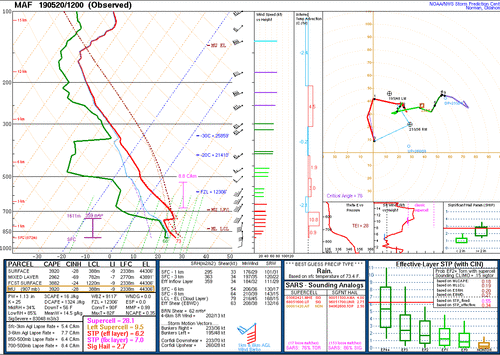Brian McKibben
EF3
Here is an important map for tracking that warm front today. Some models had theta-e get up into the 360 range today.




Jeff, I totally agree. There seems to be a storm mode issue given the deep shear vectors parallel to the dryline and pressure gradient, especially west near the greater forcing close to the dryline, as one would expect. But note the isolated cell in Kingfisher County that has gone bonkers, as should be expected given the environment. The unexpected capping inversion sampled at DFW seems to be a harbinger of more such cells later this afternoon. The HRRR has been more bullish on breaking out such cells, while NAM and WRF have been consistent for a while in a relatively undisturbed central OK getting blasted by messy storm mode around 00z.
NAM this morning was indicating some slight warming in the mid-levels through 00z, with 700 temps in the 10-12C range over SW OK, which appears to be verifying according to the SPC mesoanalysis page (and possibly also implied with the mid-day FWD sounding). Been wondering for awhile if this is the reason.Not much in the way of new development east of the DL and south of the WF lately. Not exactly sure why (maybe just too much cloud cover), but given the next wave has popped down by Lubbock and storms now filling in from there up through NC OK, I'm starting to think the evolution upscale into a big line has already commenced.
